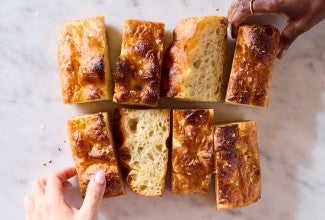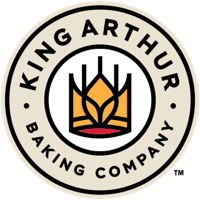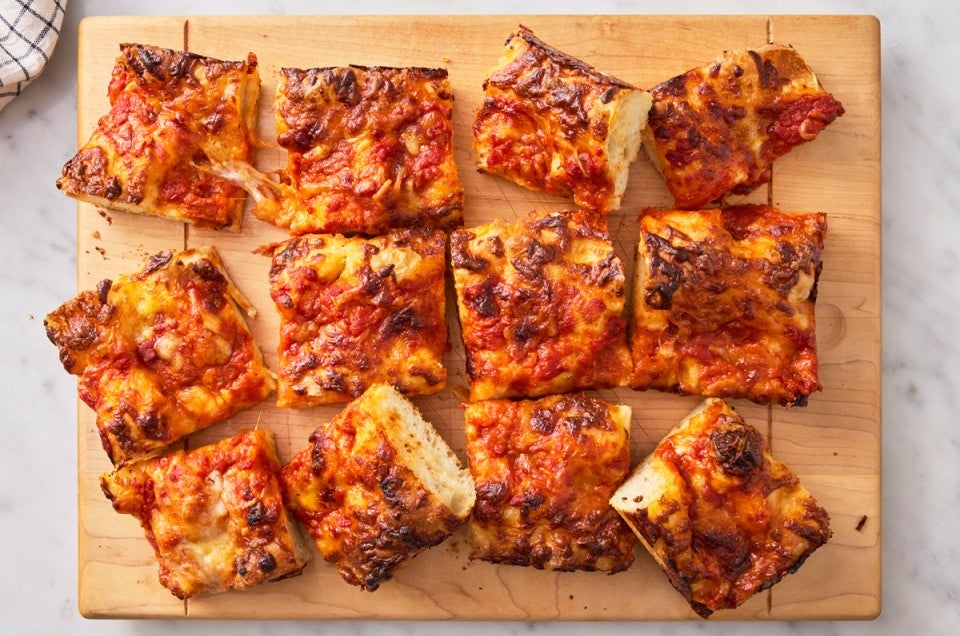


It’s a natural inclination to want to pizza-fy anything. Whether it’s garlic bread, Japanese milk bread, or bagels, pretty much everything gets an upgrade with the addition of tomato sauce and melted cheese. So when we developed Big and Bubbly Focaccia, our 2025 Recipe of the Year, we knew it would be a prime candidate to turn into pizza, too.
But while it may seem simple — just pile the dough with sauce, cheese, and toppings, and bake, right? — it can actually be tricky to turn a focaccia recipe into pizza. Due to the bread’s high hydration, excess liquid from sauce and other toppings can lead to underbaked portions — the opposite of what you want when you’re craving a crispy, golden pizza. After some careful testing, our Test Kitchen cracked the code. With these tips, you’ll be able to turn just about any focaccia into pizza (but we highly recommend starting with Big and Bubbly Focaccia!).
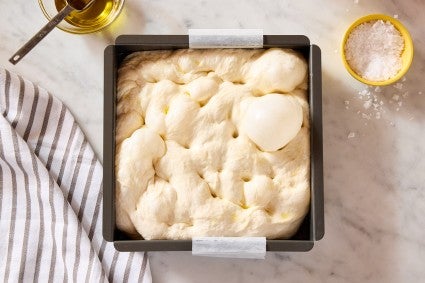
While we call for a 9" square pan to make a tall, bubbly focaccia, we recommend a 9" x 13" pan if you’re going to turn that dough into pizza. This way, the dough will be thinner (closer to 1" compared to 2") and bake more evenly.
We recommend topping the unbaked dough with cheese first, before you add any sauce. This addition creates a layer between the dough and sauce, preventing excess moisture from seeping in. As a result, the top crust can fully bake and achieve a crispy texture, rather than becoming gummy. Once you add a generous layer of cheese, you can proceed with pizza sauce, then a final thin layer of cheese. (You may recognize this technique from other pan pizza recipes, like Crispy Cheesy Pan Pizza and Detroit-Style Pizza.)
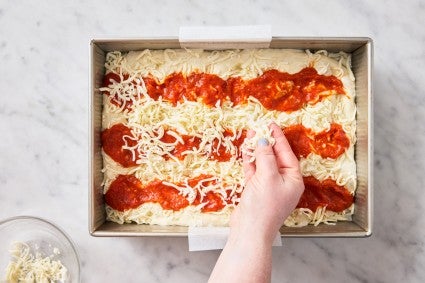
You might want to load up your pizza, but we advise that you be sparing with your toppings. Toppings (especially raw toppings) can add moisture, which is the enemy of a crisp pizza, and overloading the pie will also make it take longer to bake. Less is more: You only need to slice a quarter of an onion to place on top, for instance, or reach for a handful of cherry tomatoes, rather than the whole pint. If you want to add especially wet toppings (think mushrooms, peppers, or spinach) consider precooking those ingredients before adding them to your pizza.
You'll need:
Prepare the Big and Bubbly Focaccia recipe through step 11 (letting the dough rise in the pan), but use a 9"x13" pan rather than a 9" square. Preheat the oven to 500°F with racks in the upper and lower thirds. If you have a baking steel, place it on the lower rack to preheat.
Once the dough has risen (the dough will not fill out the pan completely), sprinkle about three-quarters of the shredded mozzarella cheese over top. (It's OK if some gets into the pan.) Lightly oil your fingers, then dimple the dough as instructed, pressing the cheese into it. Spoon the pizza sauce over top of the cheese in three or four long lines, lengthwise, then sprinkle over the remaining mozzarella cheese. If using toppings, add on top of the cheese.
Place the pan on the lower rack of the oven, directly on the steel if using, and immediately lower the temperature to 450°F. Bake for 15 to 18 minutes, until the cheese is golden brown and any visible dough is golden.
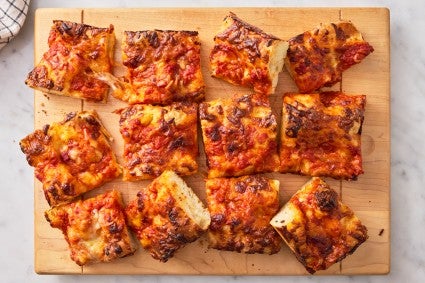
Remove from the oven and use the parchment sling to lift the pizza out of the pan and onto a wire rack. Remove the parchment, then set the rack on a baking sheet. Return to the oven for 5 to 7 minutes, until the sides are brown; if necessary, move the baking sheet to the top rack to brown the pizza's surface. (This step ensures an extra-crispy crust!)
Remove the pizza from the oven and top with grated Parmesan. Allow to cool on the wire rack for 5 to 10 minutes before slicing with a serrated knife.
Cover photo by Patrick Marinello; food styling by Yekaterina Boytsova.
